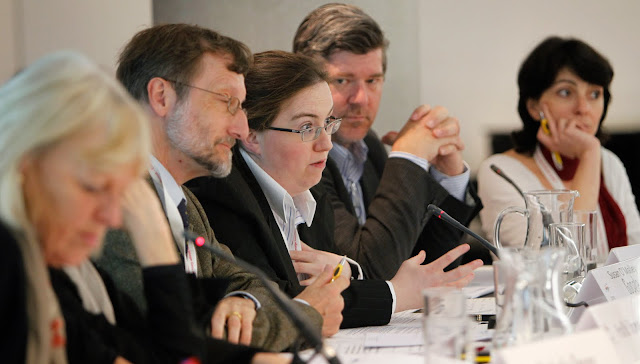Here at the annual CEPIC congress in Dublin, I’ve been included on a panel that is addressing the technology, challenges and opportunities of mass digitization. The panel is, from left to right, Nathalie Doury, general manager of Parisienne de Photographie, Angela Murphy, Digital Asset Management consultant (and so much mpore) from The Image Business, discussion leader Professor Dr. Thomas Dreier, Sylvie Fodor, General manager of CEPIC, and Susan O’Malley from Google.
 The discussion included background and progress on two particular mass digitization projects, Europeana and the Google Books project. Of course, projects like these are controversial in the context of a place like CEPIC, where those who trade in intellectual property gather. ASMP has filed suit against Google for the Books Registry project, in an effort to create a fair share of revenue for visual creators whose work is included in the scanned books. While this is likely to take some time to resolve, we have hope that, like the authors and publishers who have nearly come to settlement with Google, we can create an equitable arrangement.
The discussion included background and progress on two particular mass digitization projects, Europeana and the Google Books project. Of course, projects like these are controversial in the context of a place like CEPIC, where those who trade in intellectual property gather. ASMP has filed suit against Google for the Books Registry project, in an effort to create a fair share of revenue for visual creators whose work is included in the scanned books. While this is likely to take some time to resolve, we have hope that, like the authors and publishers who have nearly come to settlement with Google, we can create an equitable arrangement.
In addition to the discussion of the issues surrounding the Google lawsuit, I presented the case for individual photographers and other rights-holders to crete their own mass digitization projects. We need to learn some lessons from the record companies about making our intellectual property available in digital form. Instead of hoping that the technology will go away, we need to embrace it, and work to create sustainable business models that exploit it.

One of the features of a sustainable business model if the reduction of production costs. To that end, the work I’ve been doing for the last couple of years with the Camera Scanning process can help photographers unlock the creative and economic power of digitized film images. Working with Richard Anderson, Matthew Yake and Darren Higgins, we’re created some great new tutorials on the dpBestflow website that explain the process and how to set it up, as well as a sample workflow. (More on that in another post)
At the CEPIC presentation, I displayed 36 inch prints made from Camera Scans, and the unanimous conclusion was that the quality was excellent, even within the context of what a museum would be looking for. Thanks to the dpBestflow team for getting the material finished and posted in time for the presentation.
presented some sample prints that demonstrate the quality of camera
